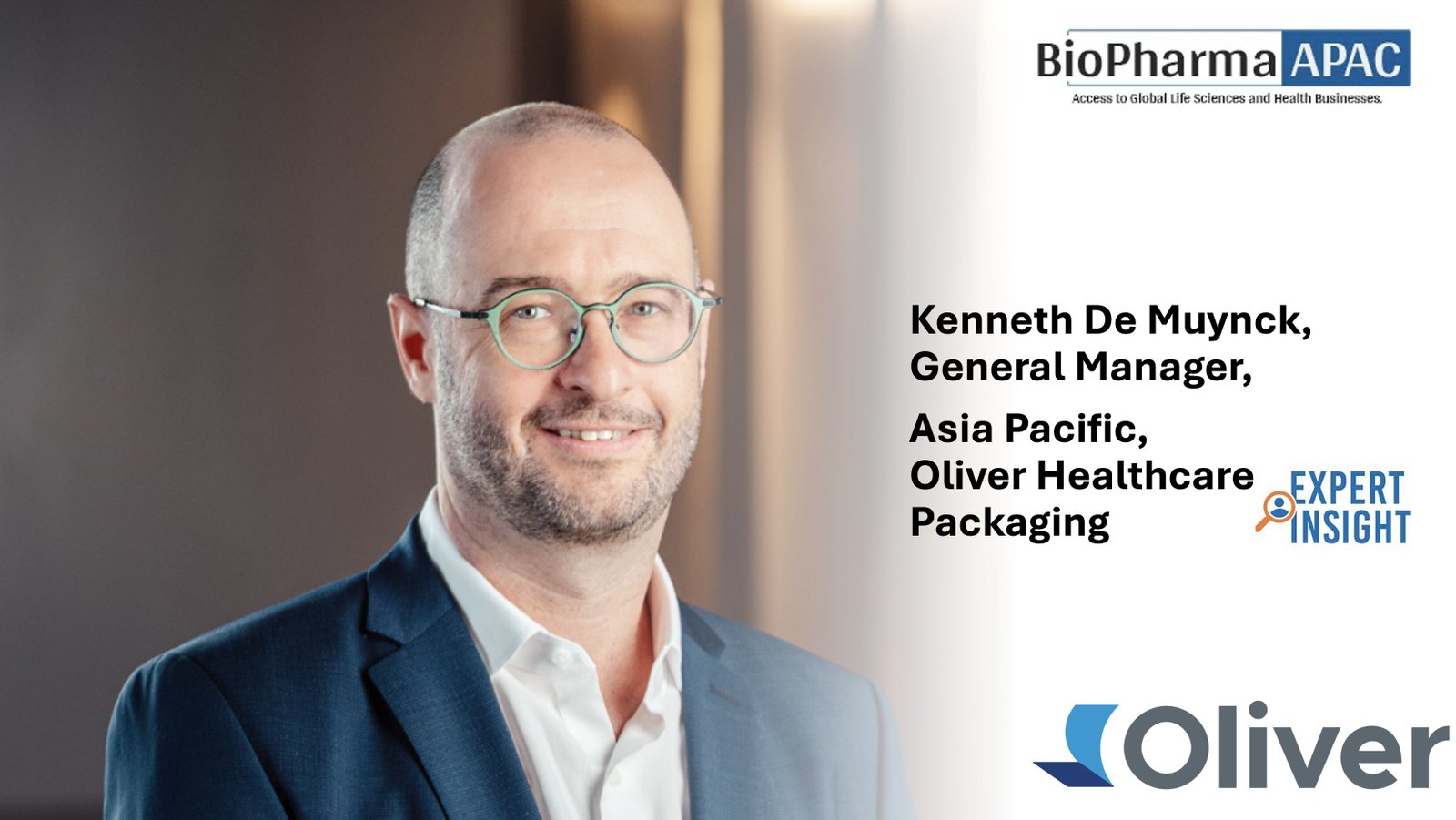Roche's Ying Ying Yeoh Explores the Power of Public-Private Partnerships in Shaping Healthcare's Future in Asia Pacific
29 November 2023 | Wednesday | News

Ying Ying Yeoh, a key figure at Roche, shares insights into the transformative impact of public-private partnerships (PPPs) on healthcare in the Asia Pacific region. With a focus on oncology, women's health, and ophthalmology, Yeoh discusses the vital role of collaborations in navigating the evolving healthcare landscape. The interview delves into Roche's successful initiatives, including the NCCS Home Care program, the Precision Oncology project, and the recently established APAC Women's Cancer Coalition, shedding light on how these partnerships are shaping the future of healthcare in Asia.
Q1: Yeoh Ying Ying, could you explain the importance of public-private partnerships in Singapore and how they encourage innovation and foster dialogue with policymakers, particularly in the fields of oncology (women's health) and ophthalmology?
The WHO has called for new ways to strengthen collaborations in health systems, among the government, private sector, academia, civil societies, patients and the public, for bolder national NCD responses.
In the context of Singapore, as we are heading towards ‘super-aged’ status by 2026, public-private partnerships (PPPs) are becoming invaluable components for the sustainability of Singapore’s healthcare system. With Healthier SG being rolled out this year, the PPP approach is more important than ever, with the new scheme requiring collaboration across all sectors and stakeholders.
Specifically, given the emergence of innovative treatments in various fields such as oncology, neuroscience and ophthalmology, it is crucial to adopt new perspectives and take proactive measures in policymaking and care models to ensure access.
For example, in women’s health, we took steps to develop PPPs to broaden access to cancer care, especially with the availability of subcutaneous (SC) formulations of key breast cancer medicines that allowed patients to be treated at home. Since 2018, Roche has partnered with the National Cancer Centre Singapore (NCCS) to co-develop and roll out the NCCS Home Care programme. NCCS Home Care was launched as a pilot delivery model in July 2020 with just 7 patients and was collaboratively tweaked until its current form today. We also worked with Jaga-Me, a local mobile nursing services provider, who provided the transportation platforms and additional manpower needed for home care delivery. Today there are more than 300 patients enrolled in the programme and a survey in 2021 found 98% of patients expressing satisfaction with the service.
In the field of ophthalmology, we partnered with the Singapore Eye Research Institute (SERI) for more than 10 years on the development and eventual approval of faricimab, the first bispecific antibody approved for the eye. Today, faricimab, also known as Vabysmo®, is approved for use in Singapore for the treatment of diabetic macular edema (DME) and neovascular age-related macular degeneration (nAMD), which are among the most common retinal conditions.10 percent of diabetic patients in Singapore may require treatment for DME, while 0.5 percent of the population here may suffer from nAMD, according to Professor Gemmy Cheung, Head of Retina Research at SERI and Head of the Medical Retina Department at Singapore National Eye Centre.
These examples illustrate how collaboration between public and private entities can bring different resources and expertise together, and ultimately bring optimal care one step closer for patients and make our health systems more effective and inclusive.
Q2: Collaboration seems to be a key theme in addressing unmet health needs in the region, such as women's cancers and ophthalmology. How do you see fostering collaboration as a means to prioritize these critical health issues?
Collaboration can bring critical issues to the fore by involving partners who have strong expertise and incentives in the area. By working together, stakeholders can leverage their expertise, resources, raise awareness of unmet needs, influence to drive positive change and ultimately improve the health and well-being of individuals in the region.
The initial crucial step is to accurately identify those needs through a collaborative approach that includes diverse stakeholders, ensuring an equitable representation of the challenges faced. It is also crucial to establish partnerships of equals built on mutual trust. This enables a seamless flow of ideas across all involved parties, allowing our thinking, policies, and collective actions to keep pace with the rapid innovation and evolving health needs of our communities.
For instance, the APAC Women’s Cancer Coalition, of which Roche is a founding member, recently gathered valuable collective insights on women's cancer in the region, which resulted in actionable recommendations for country and health leaders, empowering them to implement impactful measures and address the specific challenges faced by women battling cancer.
Q3: Roche is celebrating its 50th anniversary in Singapore this year. Could you tell us how Roche is committed to strengthening the health ecosystem in Singapore and beyond through its partnerships, specifically mentioning the ARiSE patient support program and the Precision Oncology project?
As a company, we are truly grateful to our partners from across the healthcare ecosystem, who have worked with us to achieve remarkable results in medical treatment and access to care for patients in Singapore over the last 50 years.
In Singapore, we have a phrase, ‘kampung spirit’, a unifying sense of shared goals, mutual respect and trust among people in a community. It is a concept that is familiar to many not just in Singapore but also the Southeast Asia region. We believe that the success of the collaborations and partnerships that we’ve embarked on owe a lot to the presence of this spirit among all stakeholders, with mutual understanding of and respect for each other’s strengths and limitations, as well as commitment to the long-term.
For example, to facilitate the Singapore government’s drive towards a precision medicine enabled future, the Precision Oncology study is a multilateral research partnership between Roche, the Singapore Translational Cancer Consortium (STCC), National Cancer Centre Singapore (NCCS) and the National University Cancer Institute, Singapore (NCIS) aimed at establishing critical infrastructure to advance adoption of personalised cancer care in Singapore.
Established in 2022, the three-year partnership entails STCC, NCCS and NCIS offering their medical expertise, research insight and data resources to build a consented clinico-genomic database (CGDB) in Singapore that combines clinical insights and real-world evidence with the goal of yielding better patient outcomes. Roche is providing access to 5,000 comprehensive genomic tests subsidised by Roche to patients at the onset of treatment and also advises on the design and implementation of the Singapore CGDB. To date, almost 600 patients have been enrolled in the programme across 10 different cancer types and we anticipate that the programme will continue to evolve as these data are analysed.
Another example is ARiSE (A Roche initiative for Support & Education), ARiSE is a unique local patient support programme (PSP) that uses caps on financial outlay to flatten patients’ monthly out-of-pocket expenditure on innovative medicines from Roche that are not sufficiently covered by government subsidies or insurance. Most PSPs in Singapore traditionally operate around provision of free units of medicine, but this often creates a significant administrative burden for hospital pharmacies.
ARiSE was co-developed and launched by Roche and NCCS in 2016 to address these issues. ARiSE is now accessible at all major public hospitals and encompasses a wide range of Roche medicines in breast cancer, lymphoma, rare disease and ophthalmology. Seven years on, AriSE has supported more than 2,400 patients in Singapore public health institutions on Roche innovative medicines and reduced patient out-of-pocket spend by an average of 80%, while providing more than SGD $30 million in financial subsidies.
Q4: The collaboration with the Singapore Eye Research Institute (SERI) has been ongoing for over a decade. Could you share more about the clinical trials and the approval of Vabysmo by the Health Science Authority (HSA) in 2022, and what it means for eye health in the region?
nAMD is the leading cause of vision loss in people above the age of 60 and affects about 20 million people worldwide. This number will only grow as the global population continues to age. DME affects around 21 million people globally, and this number is also expected to grow as the prevalence of diabetes increases.
Vabysmo® (faricimab) is the first dual-action medicine designed to improve vision outcomes for people with retinal conditions such as nAMD and DME, potentially reducing treatment burden with fewer injections required compared to current available therapies.
We were grateful to partner with SERI which offered capabilities and resources to see ophthalmic drug development end-to-end from pre-clinical stage through to clinical trial phase. The collaboration first began with the development of mouse models and proof of concept research, and eventually led to SERI and Singapore National Eye Centre becoming one of our Phase 3 clinical trial sites, studying the efficacy and safety of faricimab in both nAMD and DME. The success of these global phase 3 studies, which were conducted between 2018-2022, contributed to regulatory approvals around the world including Singapore.
Our collaborative efforts with SERI serves as an example of how private-public partnerships can help optimise resources, drive innovation, and positively impact patients’ lives.
Q5: The newly established APAC Women's Cancer Coalition, supported by Roche, recently published a report on investing in women's cancers in the Asia Pacific. Can you elaborate on the findings and recommendations in this report and how it aims to make a difference in the region?
Asia currently accounts for 45% of global breast cancer cases, and 58% of all global cervical cancer deaths. In many Asian countries, particularly in low- and middle-income countries, a common key challenge is limited access to earlier screening and diagnosis.
The APAC Women’s Cancer Coalition commissioned a study to understand the current challenges, opportunities for actions, and the impact of treating women's cancers in six markets in Asia: India, Malaysia, Thailand, the Philippines, Vietnam, and Indonesia.
To help countries reverse the worry trend and achieve the WHO cervical cancer and breast cancer targets, the report called for a number of actions, including:
- Enhance performance tracking by building immunisation, screening and patient outcome registries for cervical and breast cancer;
- Accelerate rollout of national immunisation programs for HPV and universal cancer screening to provide more effective prevention;
- Governments should prioritise women’s cancers as key policy areas to achieve national targets for immunisation, screening and treatment;
- Governments and global funding bodies should devise and implement effective and sustainable funding models;
- Support people diagnosed with cancer by ensuring that referral and treatment pathways are clear and well defined.
Of course, tackling cancer requires both the public and the private sides of healthcare systems to come together and create meaningful partnerships to solve the issues at hand.
The APAC WCC hopes that this report serves as a catalyst to inspire individual countries to take actions to accelerate their progress towards WHO targets for breast cancer management and cervical cancer elimination. The Coalition is actively inviting more partners to join our journey to create real-life impact for individuals and communities and champion a healthier future for women in the APAC.
Q6: Your partnerships, including the AriSE program, Shining Tower project, and collaborations with institutions like the Singapore Eye Research Institute, seem like leading examples of public-private cooperation. How do you think these partnerships can serve as models for other healthcare markets in Asia facing similar challenges and opportunities?
Despite the diverse socio-economic and healthcare settings in Asia, many markets in this region face similar evolving health challenges, such as addressing the healthcare needs of ageing populations, ensuring equitable access to innovative treatments and care, and building healthcare capacities. These issues are intricate and cannot be solved by a single entity.
International organisations such as the WHO propose partnerships as a key solution to address these system-level barriers.
Our experiences have provided valuable real-world data on how and where to form these partnerships and the tangible outcomes they can deliver.
Some key success factors from our partnerships include:
- Involvement from the beginning: Partners should be involved from the start of the journey, envisioning a collective goal that guides long-term collaboration.
- Insight-driven strategy: We take an inside-out and outside-in approach to incorporate multiple stakeholders' perspectives into our planning. This allows us to co-create plans with them.
- Sustained commitment: From R&D to access, commitment to working closely with our partners is ingrained in our organization at all levels. This allows us to identify problems and execute detailed solutions.
Importantly, to enable health system transformation through partnerships, there needs to be an agile policy environment that is conducive to and recognizes the value of collaboration. For example, as the WCC’s recent study “Impact and opportunity: the case for investing in women’s cancers in Asia Pacific” recommended, there needs to be a strong political commitment and sustainable investment to understand and confront health challenges. It's also essential to formally integrate the perspectives of all stakeholders, patients included, into the decision-making process.
At the heart of it all, collaborations should always have an aligned focus on patient outcomes as an overarching strategic objective, and at Roche we look forward to continuing to build more, and stronger partnerships to drive positive change to patients in the region. We welcome discussions and experience sharing across the region to learn from each other’s best practices, innovative solutions and challenges.
---------------
Singapore National Eye Center. New sight-saving ophthalmic drug a culmination of decade-long collaboration between Singapore Eye Research Institute and Roche. Available at: https://www.snec.com.sg/news/research/new-sight-saving-ophthalmic-drug-a-culmination-of-decade-long-collaboration-between-singapore-eye-research-institute-and-roche. Accessed Nov 2023
Most Read
- The New AI Gold Rush: Western Pharma’s Billion-Dollar Bet on Chinese Biotech
- Top 25 Biotech & Biopharma Leaders in Sustainable Innovation, 2025
- China’s Biopharma Dealmaking Surges in H1 2025, Driven by Record Licensing and Oncology Focus
- Chikungunya in China: How a “Forgotten” Arbovirus Found the Perfect Storm
- How Innovation Gaps in Biopharma Raise New Safety Concerns
- Smart Implants and the Future of Musculoskeletal Injury Treatment
- How Ethical Gaps in Psychiatry Could Undermine Biopharma Progress
- The Evolving Landscape of Women’s Health Innovation in the Asia-Pacific
- Using NLP-Driven Decision Support in Emergency Health Assistance
- Taiwan Steps Into the Global Spotlight With a New Cancer Therapy
- The Role of Unique Device Identification (UDI) in Tracing Medical Device Safety
- The Importance of a Patient’s Mental Health During Clinical Trials
Bio Jobs
- The State of Biotech and Life Science Jobs in Asia Pacific – 2025
- Avantor’s New CEO Ligner Aims to Unlock Global Potential and Deliver Shareholder Value
- AstraZeneca Commits $50 Billion to U.S. Expansion by 2030 in Biggest-Ever Global Investment
- Thermo Fisher, SAMRC, and South Africa’s Department of Science and Innovation Launch CATIR to Nurture Next-Gen Scientists
- Cube Biotech Appoints Former Sartorius CEO Dr. Joachim Kreuzburg to Board of Directors
- FDA’s AI Transition Marks a Turning Point in Drug Review: Industry Faces Pressure to Adapt Amid 20% Workforce Cut
- WuXi XDC Completes Mechanical Build of Singapore Bioconjugate Manufacturing Hub
News
Editor Picks











